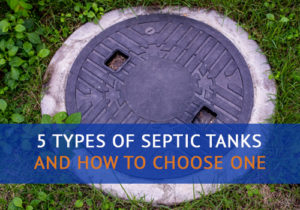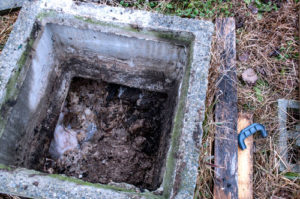 So, you’re the owner of a new property and need to learn about the type of waste management system you now have. You could be connected to a larger municipal septic system or have your decentralized septic tank. And it goes further, considering the different types of septic tanks you could have.
So, you’re the owner of a new property and need to learn about the type of waste management system you now have. You could be connected to a larger municipal septic system or have your decentralized septic tank. And it goes further, considering the different types of septic tanks you could have.
While repairs and replacements are uncommon, septic pumpings and general septic maintenance and care require knowing what type of tank your septic system uses.
Perhaps, one type even works better for your property and household needs.
Knowing your options will help you make a cost-effective and energy-efficient choice and understanding the pros and cons of each aids the decision-making process.
Septic Tanks in Florida
Did you know that just over 25% of Florida residents use a septic tank and the number is still growing.
Tanks can offer several benefits, like saving you money on monthly bills that you would have to pay to the city. In addition, they decrease the risk of widespread environmental harm if something goes wrong. This goes a long way in a state like Florida whose limestone layers easily allow ecological contamination to drinking water supplies and estuaries.
Also, septic tanks are personal, localized systems. Making them easily contained compared with city municipal waste management that supplies wastewater solutions for a large number of properties and city residents.
These tanks allow the wastewater from your property to filter appropriately during its journey to a drain field, where the water is safely absorbed back into the ground.
Depending on the size of your property, you may need a different size tank than your neighbor, so make sure to find a professional to help you make your choice.
And it’s not just size. Septic tanks come in different materials and makes as well.
Types of Septic Tanks
Steel Septic Tanks
It is safe to say that steel septic tanks are quickly being replaced by other options out there. But, that doesn’t mean that you won’t run into them in older septic systems.
One perk, steel is the least expensive material in septic tanks. However, that comes with a few problems when the steel is compromised.
Designed to last 20-25 years, steel tanks run the risk of rusting before they reach their full life expectancy. The top covers are also susceptible to rust, which is an easy replacement but could mean significant maintenance if the entire tank rusts. And say if the tank’s corroded cover goes unnoticed, there is the danger of someone falling in.
Concrete Septic Tanks

Concrete tanks are the most durable of the options and can last for several decades. These heavy tanks are staying put, meaning you won’t have to worry about them floating or moving over the years. This also means that maintenance and install are more expensive than other options.
However, concrete is susceptible to cracks. If this happens, there’s a risk of wastewater leaking out of the septic tank and into the surrounding ground. This wastewater then becomes a major threat in contaminating surrounding drinking water supplies. Cracks in the concrete can also mean that groundwater can seep into the tank. If this happens blockages occur, causing the system to back up.
Plastic Septic Tanks
Unlike concrete tanks, plastic ones are more resistant to cracks and not at risk with rust. Further, they are more resistant to the natural biological and chemical processes that take place in your septic system. Plastic tanks are lightweight, making them easy to install.
Unfortunately, their lightweight makes them susceptible to other issues.
If the ground shifts or becomes flooded, the tank can shift or rise out of the ground, causing additional issues with pipes and the surrounding property.
Plastic tanks can also experience structural damage, meaning they can become misshapen over time without you knowing immediately. If this happens, their volume can shrink. Tank lids could no longer fit, or their drain connections could break. If this is the case, make sure that your trusted professional installs these types correctly to avoid unnecessary future issues.
Fiberglass Septic Tanks
Fiberglass tanks are more durable, and unlike plastic, are not at risk of bending or shifting.
Structural weakness is not an issue with these types of septic tanks. Fiberglass is lightweight material and is noncorrosive, both inside and outside of the tank. They’re more economical than concrete tanks.
These tanks perform well in both dry and flooded environments, making them extremely
stable.
However, these still run the risk of floating in major events. And, they are generally more costly.
Aerobic Septic Tanks
Aerobic Septic Tanks use oxygen and electricity to aid the aerobic bacteria inside as it decomposes waste material. These types of tanks require more maintenance than other types of septic tanks because they are far more complex. They also cost about 2-3 times more than the other septic tanks listed above, but they are much more efficient than the other choices.
However, if you choose an aerobic septic tank and perform regular maintenance on it to ensure that it is efficient, in the long run, these tanks can save you money.
With so many types of septic tanks, the answer is up to you and your household’s needs. Perhaps you live in an area prone to moisture in the ground, like Florida. It may be prudent to choose a septic tank material that is less likely to float, like concrete or fiberglass. Maybe the area you live makes septic tanks susceptible to cracking or structural changes from ground movement. Plastic or fiberglass tanks will work better in those environments.
Not sure what types of septic tanks would work best for you? Contact Advanced Septic Services of Clermont, FL at 352-242-6100.

